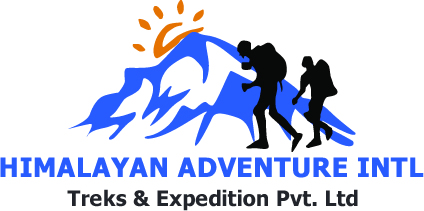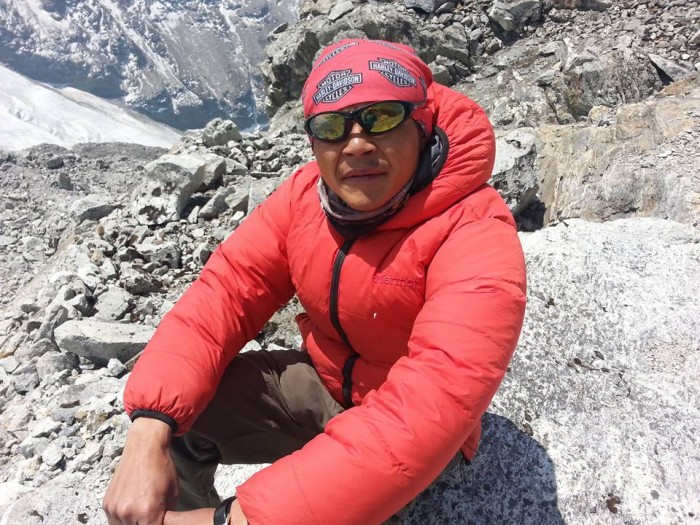The Everest Base Camp (EBC) Trek stands as one of the most iconic journeys in the world. Nestled in the heart of the Khumbu region of Nepal, it offers unmatched views of Mount Everest, rich Sherpa culture, and awe-inspiring Himalayan landscapes. For solo travelers, budget-conscious adventurers, and those seeking companionship on the trail, the Group Join Everest Base Camp Trek is an ideal way to experience this legendary adventure.
In this detailed article, Himalayan Adventure International Treks presents all the essential information about the Group Join EBC Trek, including costs, itineraries, maps, reviews, and answers to key questions like "Can I group join Everest Base Camp Trek?" or "How much does it cost for Nepali and Indian citizens?"
Can I Group Join Everest Base Camp Trek?
Absolutely! Group joining treks are popular and encouraged in Nepal. Whether you're traveling alone, with a friend, or on a budget, joining a group allows you to share costs, build camaraderie, and enjoy a safe, structured trekking experience led by certified guides.
With Himalayan Adventure International Treks, you can join for Everest Base Camp trek with fixed departure dates for 2025 and 2026, ensuring flexibility and affordability.
Group Join Everest Base Camp Trek 14 Days Itinerary
Here’s our most popular and refined Group EBC Trek itinerary that spans 14 days, striking the perfect balance between acclimatization and exploration.
Group Join Everest Base Camp Trek 14 Days Itinerary
Day 01: Arrival in Kathmandu (1,400m)
Day 02: Flight to Lukla (2,860m), trek to Phakding (2,610m) – 4 hrs
Day 03: Trek to Namche Bazaar (3,440m) – 6 hrs
Day 04: Acclimatization day at Namche Bazaar – Explore Everest View Hotel
Day 05: Trek to Tengboche (3,860m) – 5 hrs
Day 06: Trek to Dingboche (4,410m) – 5 hrs
Day 07: Acclimatization hike to Nangkartshang Peak (5,100m)
Day 08: Trek to Lobuche (4,910m) – 5 hrs
Day 09: Trek to Everest Base Camp (5,364m), back to Gorak Shep (5,164m) – 8 hrs
Day 10: Hike to Kala Patthar (5,545m), trek to Pheriche (4,240m) – 7 hrs
Day 11: Trek to Namche Bazaar – 6 hrs
Day 12: Trek to Lukla – 7 hrs
Day 13: Fly back to Kathmandu
Day 14: Final departure
This Everest Base Camp trek 14 days itinerary is group-friendly and allows proper acclimatization, a key to preventing altitude sickness.
Group Join Everest Base Camp Trek Cost
Group Join Everest Base Camp Trek Cost Breakdown (2025/2026)
| Service |
Cost (USD) |
| Group Join EBC Trek (All-Inclusive) |
$1199 – $1399 |
| Cost for Nepali (Kathmandu-Lukla-Kathmandu, guide, permits, lodges) |
NPR 55,000 – NPR 70,000 |
| EBC Trek Cost for Indian Citizens (INR) |
₹85,000 – ₹1,10,000 |
| Join Group EBC Trek Price (Budget) |
$1199 – $1300 |
The Group EBC Trek cost varies depending on inclusions like meals, accommodations, guide/porter services, and transport. Himalayan Adventure International Treks offers affordable group join Everest Base Camp trek packages with no hidden charges.
What’s Included in the Group Join Everest Base Camp Package?
-
Domestic flights (Kathmandu–Lukla–Kathmandu)
-
Government-licensed English-speaking guide
-
One porter for every two trekkers
-
Sagarmatha National Park & Khumbu Entry Permits
-
Teahouse accommodations throughout trek
-
Breakfast, lunch, and dinner during trek
-
First aid, oximeter, and trekking certificate
-
Complimentary airport transfers
Group EBC Trek Map
(For illustrative purpose – actual route may vary)
The Group EBC Trek map highlights the major checkpoints: Lukla – Phakding – Namche – Tengboche – Dingboche – Lobuche – Gorakshep – Everest Base Camp – Kala Patthar and back.
Want a Private EBC Trek map? We provide customized maps and elevation charts in our trekking kits.
Group EBC Trek Reviews
What Our Clients Say:
🟢 “Joining a group made the experience even more special. The guide from Himalayan Adventure was incredibly experienced, and I met amazing people on the trail.” – Sophia M., USA
🟢 “Best value for money! The group size was perfect, and everything was taken care of. Highly recommend for solo travelers.” – Rajan S., India
🟢 “As a Nepali, I wanted a reliable group to trek with. The price was affordable, and the service was excellent.” – Manish K., NepalCheck more Group EBC Trek reviews and Private EBC Trek reviews on TripAdvisor and Google.
Private EBC Trek – Ideal for Flexibility
If you prefer privacy, flexibility, and custom pacing, our Private Everest Base Camp Trek is a great option.
Private EBC Trek Cost & Services
| Service |
Price (USD) |
| Private EBC Trek |
$1499 – $1700 |
| Private EBC Trek Cost for Nepali |
NPR 100,000 – NPR 110,000 |
| Private EBC Trek Price for Indian Passport |
₹95,000 – ₹1,35,000 |
Private treks include private guide/porter, flexible itinerary, and exclusive lodging options.
Private EBC Trek Difficulty
While not technical, EBC trek requires moderate fitness. With a private itinerary, acclimatization is tailored to your pace, making it easier for older or first-time trekkers.
Everest Base Camp Trek Cost for Nepali and Indian Citizens
Nepali and Indian citizens often benefit from discounted permit fees and local travel options.
EBC Trek Cost for Nepali from Kathmandu
-
Shared group cost: NPR 55,000 – NPR 70,000
-
Private option: NPR 70,000 – NPR 90,000
This includes flights, permits, guide, porter, and accommodation.
Everest Base Camp Trek Cost for Indian Passport Holders
-
Group Join Package: ₹85,000 – ₹1,10,000
-
Private Package: ₹1,00,000 – ₹1,35,000
Permits for SAARC nationals like India are cheaper, reducing the total Everest Base Camp trek cost for Indian citizens.
Solo EBC Trek – Is It Possible?
Yes, solo trekking is possible, but since April 2023, Nepal requires solo trekkers to hire a licensed guide for safety.
Solo EBC Trek Itinerary
Solo trekkers often prefer this flexible Everest Base Camp trek 12 days itinerary:
Kathmandu – Lukla – Phakding – Namche – Pangboche – Dingboche – Lobuche – EBC – Kala Patthar – Pheriche – Namche – Lukla – Kathmandu
Solo EBC Trek Cost
| Trek Type |
Cost |
| Solo with guide |
$1500 – $1700 |
| Solo with private porter-guide |
$950 – $1100 |
For better value, Join group EBC trek cost is often lower than going solo.
Everest Base Camp Trek Cost by Helicopter
Wondering how much does it cost to go to Everest Base Camp by helicopter?
-
One-way (Kathmandu to EBC): $1200 – $1500 per person (group-sharing)
-
Helicopter Return from Gorakshep or Kala Patthar: $950 – $1250 per person
-
Luxury Everest Base Camp Trek with Helicopter Return: $2000 – $3000+
Cheapest Everest Base Camp Trek – Budget Options
Looking for a cheap Everest Base Camp trek?
At Himalayan Adventure International Treks, we offer the cheapest EBC group join trek without compromising safety:
Ideal for budget travelers, students, and local trekkers.
Everest Base Camp Trek Packages from India
Our Mount Everest trekking package from India includes:
Everest Base Camp Trek Cost from Delhi
| Package |
Cost (INR) |
| Standard Group Join |
₹85,000 |
| All-Inclusive + Flights |
₹1,25,000 |
| Luxury Heli Return |
₹2,25,000+ |
Everest Base Camp Blog – Trek Insights
Visit our Everest Base Camp blog on the Himalayan Adventure International Treks website for:
Everest Base Camp Trek 2026 – Book Early!
Trekking to Everest in 2026? Reserve your seat early to secure:
-
Discounts on group join EBC trek price
-
Customizable dates for private EBC treks
-
Helicopter return options
We provide early bird deals for both Everest Base Camp trek 14 days and Everest Base Camp trek 12 days itinerary.
Annapurna Base Camp Trek Cost – Alternative Adventure
If EBC seems a bit intense, try Annapurna Base Camp Trek. It’s shorter and less remote.
Final Thoughts – Why Trek with Himalayan Adventure International Treks?
-
✅ Trusted local operator with over a decade of experience
-
✅ English-speaking licensed guides
-
✅ Affordable group join and private options
-
✅ 24/7 support & free itinerary customization
-
✅ Best reviews from trekkers across the globe
Book Your Group Join Everest Base Camp Trek Now!
🌐 Visit: www.himalayanadventureintl.com
📧 Email: info@himalayanadventureintl.com
📞 Call/WhatsApp: +977-9849674919
Make your Everest dream come true with a reliable, professional team. Whether you go solo, join a group, or opt for a private trek, we’re here to make your journey unforgettable.

 Plan Your Trip Now
Plan Your Trip Now 


